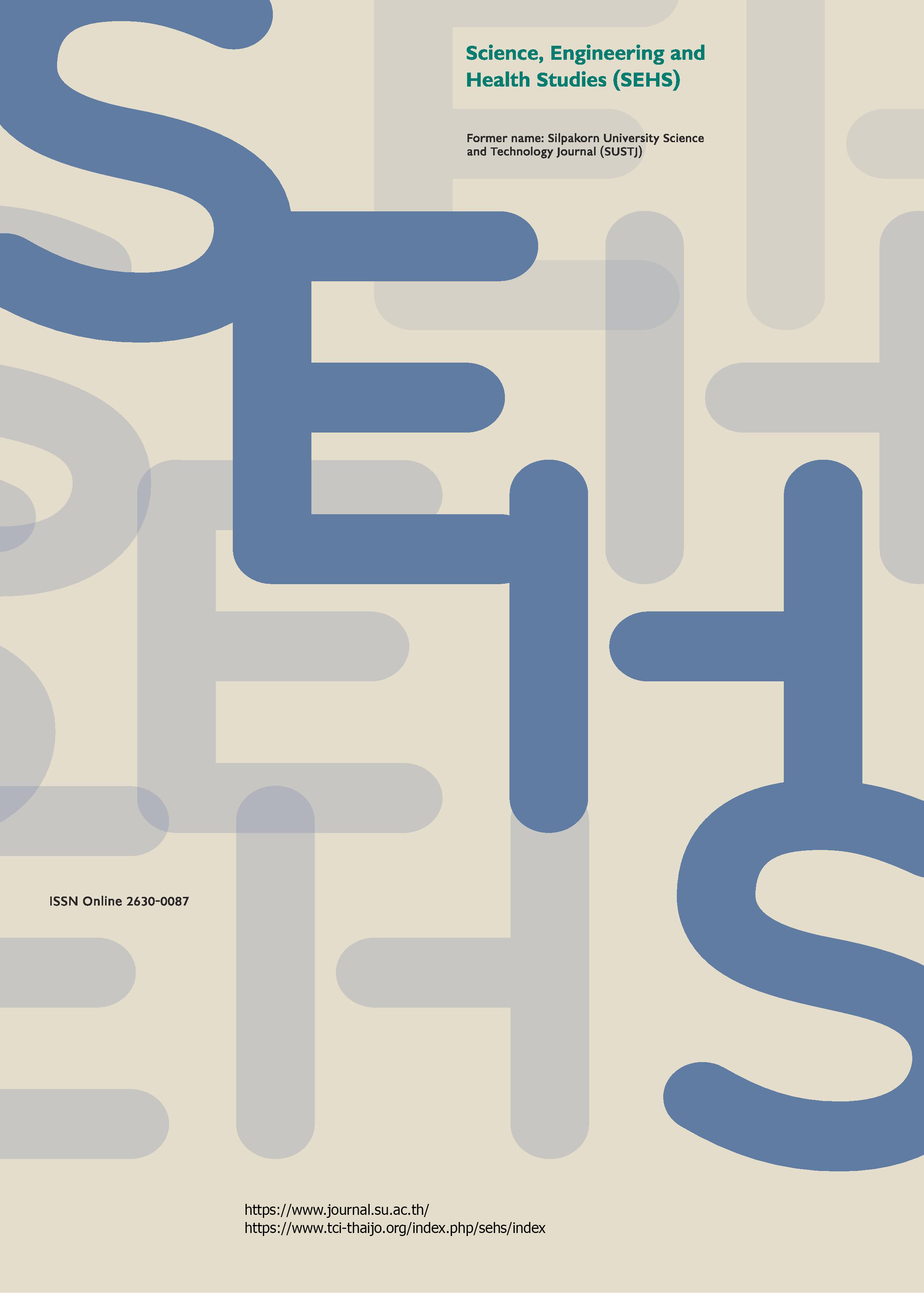A study on the impact of courtyard vegetation on its thermal comfort performance in an educational building of warm and humid climates
Main Article Content
Abstract
Courtyards are a popular design element that often focus on aesthetics while neglecting their potential functionality. Homogenous courtyard designs persist across climates, overlooking their ability to improve thermal performance. This research addresses this critical gap by conducting a quantitative study on the functional benefits of courtyards in an educational building. A case study approach was used to compare two similar courtyards at the NIT Trichy campus: one with and one without vegetation. This method allows for the isolation and quantification of the influence of courtyard vegetation on thermal performance. Field measurements of relevant thermal factors were conducted, complemented by simulations utilizing the Ladybug tool within Rhino software. The results revealed a compelling case for the integration of vegetation within courtyards. Significant variations in thermal factors were observed, particularly during mornings and noon. The vegetated courtyard had a 5–7°C lower mean radiant temperature than its non-vegetated counterpart. Furthermore, the simulations suggested that strategically placed trees can mitigate heat stress, potentially reducing the area subjected to strong heat stress by 50–70%, as measured using the universal thermal climate index. These findings highlight the importance of strategically designed courtyards with vegetation for promoting thermal comfort in educational buildings.
Downloads
Article Details

This work is licensed under a Creative Commons Attribution-NonCommercial-NoDerivatives 4.0 International License.
References
Abdallah, A. S. H. (2022). Passive design strategies to improve student thermal comfort in Assiut University: A field study in the faculty of physical education in hot season. Sustainable Cities and Society, 86, 104110.
Al-Hafith, O., Satish, B. K., Bradbury, S., and de Wilde, P. (2017). The impact of courtyard parameters on its shading level an experimental study in Baghdad, Iraq. Energy Procedia, 134, 99–109.
d’Ambrosio Alfano, F. R., Dell’Isola, M., Ficco, G., Palella, B. I., and Riccio, G. (2022). Small globes and pocket heat stress meters for WBGT and PHS evaluations. A critical analysis under controlled conditions. Building and Environment, 226, 109781.
d’Ambrosio Alfano, F. R., Ficco, G., Frattolillo, A., Palella, B. I., and Riccio, G. (2021). Mean radiant temperature measurements through small black globes under forced convection conditions. Atmosphere, 12(5), 621.
Diz-Mellado, E., Nikolopoulou, M., López-Cabeza, V. P., Rivera-Gómez, C., and Galán-Marín, C. (2023). Cross-evaluation of thermal comfort in semi-outdoor spaces according to geometry in Southern Spain. Urban Climate, 49, 101491.
Edwards, B., Sibley, M., Hakmi, M., and Land, P. (2006). Courtyard Housing: Past, Present and Future. New York: Taylor & Francis.
El-Bahrawy, A. M. F. (2024). Investigating ladybug as a tool for measuring outdoor thermal comfort in urban neighborhoods. Journal of Engineering Sciences, 52(1), 33–57.
Elgheznawy, D., and Eltarabily, S. (2021). The impact of sun sail-shading strategy on the thermal comfort in school courtyards. Building and Environment, 202, 108046.
Ghaffarianhoseini, A., Berardi, U., and Ghaffarianhoseini, A. (2015). Thermal performance characteristics of unshaded courtyards in hot and humid climates. Building and Environment, 87, 154–168.
Halder, B., Karimi, A., Mohammad, P., Bandyopadhyay, J., Brown, R. D., and Yaseen, Z. M. (2022). Investigating the relationship between land alteration and the urban heat island of Seville city using multi-temporal Landsat data. Theoretical and Applied Climatology, 150, 613–635.
Ibrahim, Y., Kershaw, T., and Shepherd, P. (2020). Improvement of the ladybug-tools microclimate workflow: A verification study. In Proceedings of IBPSA-England Building Simulation and Optimisation Conference 2020 (BSO-V 2020), pp. 88–95. Loughborough, UK.
Karimi, A., Bayat, A., Mohammadzadeh, N., Mohajerani, M., and Yeganeh, M. (2023). Microclimatic analysis of outdoor thermal comfort of high-rise buildings with different configurations in Tehran: Insights from field surveys and thermal comfort indices. Building and Environment, 240, 110445.
Karimi, A., Kim, Y. J., Zadeh, N. M., García-Martínez, A., Delfani, S., Brown, R. D., Moreno-Rangel, D., and Mohammad, P. (2022). Assessment of outdoor design conditions on the energy performance of cooling systems in future climate scenarios—A case study over three cities of Texas, Unites States. Sustainability, 14(22), 14848.
Karimi, A., Sanaieian, H., Farhadi, H., and Norouzian-Maleki, S. (2020). Evaluation of the thermal indices and thermal comfort improvement by different vegetation species and materials in a medium-sized urban park. Energy Reports, 6, 1670–1684.
Kaushik, S. A. S., Gopalakrishnan, P., and Subbaiyan, G. (2022). User perception study of pedestrian comfort including thermal effects in an educational campus. In Proceedings of the Sixth International Conference of Transportation Research Group of India: CTRG 2021 Volume 2 (Devi, L., Asaithambi, G., Arkatkar, S., and Verma, A., Eds.), pp. 287–301. Tiruchirappalli Tamil Nadu, India.
Koch-Nielsen, H. (2013). Stay Cool: A Design Guide for the Built Environment in Hot Climates. Oxfordshire: Routledge.
Lopez-Cabeza, V. P., Alzate-Gaviria, S., Diz-Mellado, E., Rivera-Gomez, C., and Galan-Marin, C. (2022). Albedo influence on the microclimate and thermal comfort of courtyards under Mediterranean hot summer climate conditions. Sustainable Cities and Society, 81, 103872.
Mahmoud, R. M. A., and Abdallah, A. S. H. (2022). Assessment of outdoor shading strategies to improve outdoor thermal comfort in school courtyards in hot and arid climates. Sustainable Cities and Society, 86, 104147.
Manavvi, S., and Rajasekar, E. (2020). Estimating outdoor mean radiant temperature in a humid subtropical climate. Building and Environment, 171, 106658.
Mohammad, P., Aghlmand, S., Fadaei, A., Gachkar, S., Gachkar, D., and Karimi, A. (2021). Evaluating the role of the albedo of material and vegetation scenarios along the urban street canyon for improving pedestrian thermal comfort outdoors. Urban Climate, 40, 100993.
Ouyang, W., Liu, Z., Lau, K., Shi, Y., and Ng, E. (2022). Comparing different recalibrated methods for estimating mean radiant temperature in outdoor environment. Building and Environment, 216, 109004.
Salameh, M., Touqan, B., and Salameh, M. (2020). Courtyard design in schools and its influence on students’ satisfaction. In Proceedings of the 5th World Congress on Civil, Structural, and Environmental Engineering, pp. 1–12. Lisbon, Portugal.
Woods, P., and Hyde, R. (2013). Climate Responsive Design: A Study of Buildings in Moderate and Hot Humid Climates. New York: Taylor & Francis.

